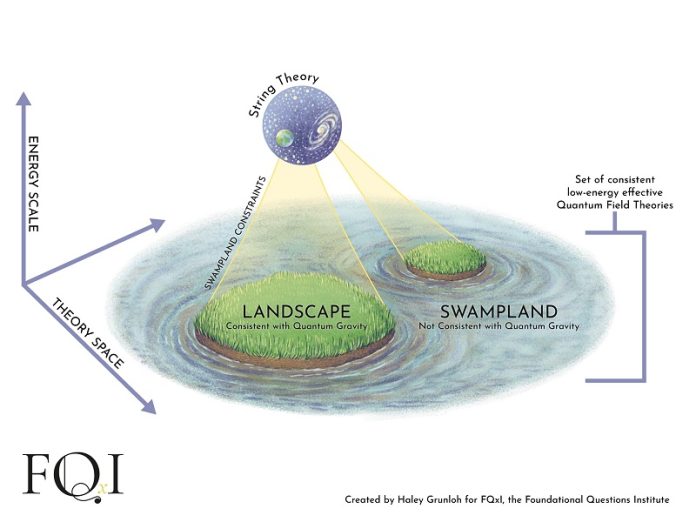
For decades, string theory has promised to be the ultimate explanation for how our universe works.
In this theory, all matter and forces are made of tiny vibrating strings of energy.
But there’s a problem: most versions of string theory don’t match what we actually observe in our universe.
In particular, they struggle to explain two major discoveries—how the universe expanded rapidly right after the Big Bang, and how it is now expanding faster and faster due to dark energy.
Scientists call this mismatch the “string theory swampland.” These are theories that look good on paper but don’t work when tested against the rules of quantum gravity and our current understanding of the universe.
They seem to predict strange, impossible universes instead of the one we live in.
Now, physicist Eduardo Guendelman from Ben-Gurion University in Israel has proposed a fresh idea that might help string theory escape this swamp.
His new research, published in The European Physical Journal C, introduces a version of string theory where the strings don’t have a fixed tension. Instead, their tension changes depending on how they behave—a concept known as dynamical tension.
In most string theory models, the tension of a string (which is like the tightness of a rubber band) is fixed by the physicist choosing a value. Guendelman’s idea is different: let the tension develop naturally from the theory itself. This small change could make a huge difference.
Why does this matter?
The swampland rules, which tell us which theories are valid, depend on something called the Planck scale—the smallest length possible in the universe. And the Planck scale is connected to string tension. So if the tension isn’t fixed, the Planck scale isn’t either. That means the limits set by the swampland rules can shift or even disappear.
This opens up exciting possibilities. With dynamic string tension, it may be easier to explain early cosmic inflation (the rapid growth right after the Big Bang) and the current acceleration of the universe due to dark energy. These are things standard string theories struggle with.
Guendelman argues that this makes his version of string theory far more compatible with the universe we observe.
Rather than being stuck in the swampland, this new approach offers a path back to solid ground—where string theory might once again be a strong candidate for the “theory of everything.”
While it’s still early days, this research offers hope that string theory can be adjusted to better match our cosmic reality, without giving up its deep mathematical beauty.
Source: KSR.



